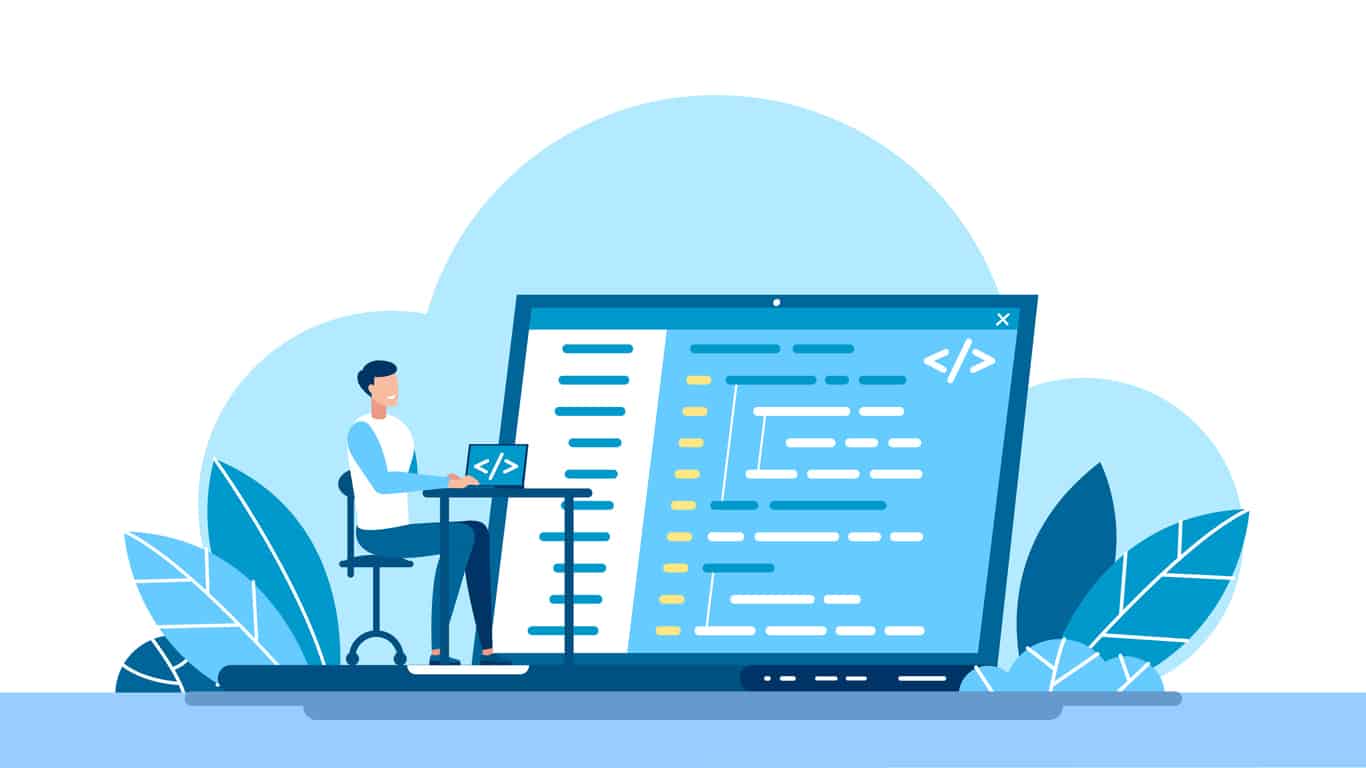Choosing one between SOAP and REST becomes an issue nowadays. And it is surprisingly difficult to choose between them. So, we created this article where we compared both the APIs so that you can have a better understanding of these in the situations where you need to choose one of them. The direct comparison of these two may not be feasible for you to understand, therefore what you can get from this article is the definitions of both, their uses, some examples, and the key differences between these two.
However, each technique whether it is REST API or SOAP API has its pros and cons. Therefore, it is always good to know about these technologies which will work better for the specific situation. In this article, you will see SOAP vs REST web services for beginners and professionals with examples of each.
- What is SOAP?
- What is REST?
- Difference Between SOAP and REST
- Challenges in SOAP API
- Challenges in REST API
- Conclusion
What is SOAP?
SOAP is an abbreviation used for Simple Object Access Protocol. SOAP is a protocol and it is useful when we want to exchange the data between different applications and platforms. SOAP is based on XML as it needs to access Web Services. W3C also recommends using SOAP to establish communication between applications. SOAP is very useful as it is a platform and language-independent protocol. SOAP is mainly used to enable interaction with applications built on different programming languages.
When to use SOAP?
SOAP is also useful in some use cases that include the following:
Formal Communication: SOAP is useful when some applications have an agreement to use specific services of other applications or if there is some rigid specification for the interaction of applications. Let us take the same example that we discussed in the case of REST of an E-commerce platform. In this case, only the payment page is required by the platform as a web service and there’s an agreement between the e-commerce platform and the web service to use only when the user wants to make payments after he added items to the cart. In these scenarios, SOAP comes into view as it is very useful to carry out the data exchange between different platforms.
Stateful Condition: Just like the opposite in the case of REST, here if the application requires the state to be maintained for handling requests to the server, then SOAP can be used in that situation.
Asynchronous Processing and some relevant invocation: Suppose a client wants a 100% guarantee for reliable data transfer and security, then SOAP can be used to handle this situation as it provides various features that can be modified according to use and especially it focuses on Security features.
A Simple SOAP Example
Let’s take an example of SOAP API for Number To Words:
<?xml version= “1.1” encoding= “utf-8”?>
<soap: Envelope xmlns: soap= https://schemas.xmlsoap.org/soap.envelope/>
<soap:Body>
<Words xmlns= https://mygreatlearning.in/webservices/>
<ubiNum>200</ubiNum>
</Words>
</soap:Body>
</soap:Envelope>This simple example is used to convert the number to words from a web service.
What is REST?
REST is an abbreviation used for Representation State Transfer and REST is not a protocol but it is an architectural pattern that is very useful when you are working with components, files, or objects on a specific hardware device. The web services that are defined on the top of REST are called RestFul web services. These web services include simple HTTP commands such as GET, POST, DELETE, and PUT. REST is also capable of using the SOAP protocol.
When to use REST?
There are some conditions in which we can use REST that include:
Condition of Stateless: This condition occurs when you don’t need to maintain the information about different states from one request to another. In this condition of Statelessness, REST should be used. For example, if you are purchasing any product from an e-commerce site, then the product needs to be added to the cart before you go for purchase. After that, all the items in your cart are transferred to the payment page when you go to purchase the items in your cart. And this is the situation where the application needs a state of feature to make the transfer of products to the payment page. And all this can be done by using REST.
Caching: Caching is used to record a number of requests from the web servers. And if there is a situation when a lot of requests need to be cached, then you should use REST services. The process of storing cache can be described in this way: Whenever a client requests a service to the server, then the most frequent queries are stored at some location by the cache. And if the client again requests for the same service, then it first checks into the storage for the cache, if it exists, then the request does not proceed to the server and the request is completed on the system itself. But, if the cache for the request doesn’t exist, then it sends the request further to the server. In this way, Caching helps to reduce the load on the server and maintains the frequent requests from the clients.
When the resources and bandwidth are limited: When we have only limited resources to be used for the transfer to other networks and the bandwidth is also limited, then we should use REST. Because SOAP is not a feasible solution in this scenario as it will consume higher bandwidth and may lack the bandwidth when we have only limited bandwidth. Therefore, REST comes into view in this situation where the bandwidth and other resources are limited.
To implement the ease of coding: The implementation of REST is far easier than SOAP because it doesn’t require much coding and it can be implemented quickly for the required web services.
A Simple REST Example
Suppose you want to fetch the facts from a web service by the method of GET, the following example will work for it:
curl –location –request GET ‘https://daily-facts.facts.com/facts/’The above example fetches the daily facts from the web service included in the address.
Difference Between SOAP and REST
Here are some differences between SOAP and REST as follows:
| SOAP | REST |
|---|---|
| 1. SOAP is a short form of Simple Object Access Protocol. | 1. REST is a short form for REpresentational State Transfer. |
| 2. SOAP is a protocol. | 2. REST is an Architectural Design. |
| 3. REST protocol cannot be used in SOAP. | 3. SOAP can be used in REST for certain web services. |
| 4. The service interfaces are used to increase the functionality of client applications. | 4. REST can be used to access some components of Hardware devices as it uses Uniform Service Locators. |
| 5. High bandwidth is required for SOAP for the transfer of information. | 5. Limited bandwidth can be used in REST for the transfer of data. |
| 6. SOAP only works with XML format. | 6. REST works with different formats such as HTML, XML, plain text, JSON, etc. |
| 7. SOAP is difficult to implement. | 7. REST can be implemented easily. |
| 8. SOAP has SSL and Ws-security from the security point of view. | 8. REST has SSL and HTTPS both. |
| 9. SOAP uses web services. | 9. REST uses URI interfaces. |
| 10. SOAP has its definition for security premises. | 10. REST inherits the Security measures from transport. |
| 11. SOAP is not preferred much. | 11. REST is preferred more than SOAP. |
| 12. The Java API used for SOAP is JAX-WS. | 12. The Java API used for REST is JAX-RS. |
Challenges in SOAP API
Some challenges occur in SOAP API as follows:
1. Size of the document: The SOAP messages that you want to transfer to the server create problems if the size of the message is larger. The size of the document may also affect the bandwidth and that’s why it may create issues while using SOAP in low bandwidth situations.
2. WSDL file (Web Services Description Language): The WSDL file also creates challenges for the SOAP API as it contains all the details for example the information about the data types that are used in SOAP messages and the operations that are available in web services.
For a sample WSDL file, refer to the following code:
<?xml version = “1.1”?>
<definitions name = “GLearnings”
targetNamespace = https://www.mygreatlearning.com
xmlns: tns=https://www.mygreatlearning.com
xmlns:xsd1=https://www.mygreatlearning.com
xmlns:soap=https://www.mygreatlearning.com
xmlns=https://www.mygreatlearning.com>
<types>
<schema targetnamespace=https://www.mygreatlearning.com
xmlns=https://www.mygreatlearning.com>
<element name = “MyGreatLearningAccount”>
<complexType>
<all>
<element name = “NameOftheCourse” type =”string”/>
</all>
</complexType>
</element>
<element name = “CourseApply”>
<complexType>
<all>
<element name = “courseID” type = “number”/>
</all>
</complexType>
</element>
</schema>
</types>The code that is written above works just like a WSDL File and the element that we created named “NameOftheCourse” is a type of string data type and this element is a part of “MyGreatLearningAccount”. For an instance, if you want to change the element “NameOftheCourse” to “CourseNames”. And you need to implement this through the web service. Here comes the challenge to do that because there occurs a fixed contract between the client and the server and therefore, the change in the element of the WSDL file may impact the whole application.
Challenges in REST API
The challenges that one might face using REST API are:
1. Statelessness: As we already discussed this property in REST API, most applications require a stateful mechanism to operate the transfer of data between services and applications. And the statelessness in REST API creates challenges such as making the client application heavier and increasing the load on the server too. This also creates difficulty in maintaining the REST API.
2. Insecure: REST API lacks security functionality. As in REST API, we can easily access publicly available URLs and when the situation comes to pass the confidential data, then it doesn’t provide the level of security that we get in SOAP API.
Conclusion
With this, we come to an end for this blog. We hope that you were able to get a better understanding of what SOAP and REST are and how they differ from each other. Looking for further API learning? Enroll in these free API courses today!






